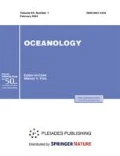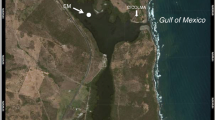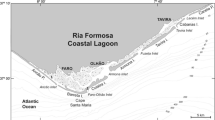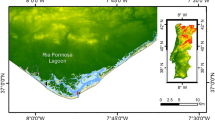Abstract
Experiments on nutrient and iron amendments were performed with phytoplankton on the eastern shelf of the Bering Sea in June 2000 and August 2001. The nutrient amendments (NO3, NH4, SiO4, NO3 + SiO4, NH4 + SiO4, and Fe + NO3) increasing their initial concentrations by ∼20 μM were put into test bottles 10 l in volume each. With iron addition (Fe or Fe + NO3), its concentration increased by 5 nM. The experiments performed showed that the main nutrient that limited the phytoplankton development was nitrogen. Regardless of the composition of the dominant algae in the background community, the amendments caused massive development of diatoms. The intense growth was characteristic for diatoms of both the spring and spring-summer assemblages. At high abundances of Phaeocystis pouchetii or of the coccolithophore Emiliania huxleyi in the natural water, nitrogen-containing amendments caused an intense growth of these species, along with the massive development of diatoms. In the case of the diatom prevalence in the initial sample, the intensities of the utilization of NO3 and NH4 in combination with SiO4 in the course of the experiment were 1.7 and 3 times as high as their intensities with no silicon amendments. Likewise, NO3 + SiO4 and NH4 + SiO4 mixed amendments caused an increase in the silicon assimilation by a factor of 4–5 as compared to pure silicon amendments. During one of the experimental series in which both diatoms and Phaeocystis pouchetii actively developed, virtually complete nitrogen utilization (90–99.8%) in 4–5 days was observed for both the NO3 and NH4. The addition of silicon and iron only caused no significant growth of the phytoplankton abundance. It was assumed that the destruction of the seasonal thermocline and the supply of nutrients into the surface layer as a result of strong wind forcing might cause a phytoplankton bloom in the summer time and result in the much pronounced qualitative and quantitative spatial heterogeneity of the phytoplankton characteristic of the eastern shelf of the Bering Sea.
Similar content being viewed by others
References
I. N. Sukhanova, “Concentrating Phytoplankton in a Sample,” in Modern Methods for Quantitative Estimating Marine Plankton Distribution (Nauka, Moscow, 1983), pp. 97–105 [in Russian].
I. N. Sukhanova, M. V. Flint, T. E. Whitledge, and E. D. Lessard, “Coccolithophors in the Phytoplankton of the Eastern Bering Sea after the Anomalous Bloom of 1997,” Okeanologiya 44(5), 709–722 (2004) [Oceanology 44 (5), 665–678 (2004)].
I. N. Sukhanova, M. V. Flint, T. E. Whitledge, et al., “Mass Development of the Planktonic Diatom Proboscia alata over the Bering Sea Shelf in the Summer Season,” Okeanologiya 46(2), 220–237 (2006) [Oceanology 46 (2), 200–216 (2006)].
H. J. W. Baar, J. T. M. de Long, D. C. E. Bakker, et al., “Importance of Iron for Plankton Blooms and Carbon Dioxide Drawdown in the Southern Ocean,” Nature 373, 412–415 (1995).
E. F. Bernard, B. Reimann, and J. C. Lewin, “The Diatom Genus Cylindrotheca Rabenhorst,” J. of the Royal Microscopical Society 83, 283–296 (1964).
L. E. Brand, “Minimum Iron Requirements of Marine Phytoplankton and the Implications for the Biogeochemical Reference of New Production,” Limnol. Oceanogr. 36, 1756–1771 (1991).
E. Fernandez, P. Boyd, P. M. Holligan, and D. S. Harbour, “Production of Organic and Inorganic Carbon within a Large-Scale Coccolithophore Bloom in the Northeast Atlantic Ocean,” Mar. Ecol.: Proc. Ser. 97, 271–285 (1993).
M. V. Flint, A. V. Drits, M. V. Emelianov, et al., Study of Marine Ecosystem in the Vicinity of the Pribilof Islands for General Ecological Evaluation and Elucidation of the Most Valuable Ecological Zones (Investigations of the Pribilof Marine Ecosystem. Project Report) (Shirshov Inst. Oceanol., St. Paul, Alaska-Moscow, 1994).
M. V. Flint, A. V. Drits, M. V. Emelianov, et al., Significance of Oceanographic and Biological Processes in the Outer and Middle Shelf Domains, at the Shelf Break, and Middle Fronts for Biological Productivity of the Pribilof Ecosystem, the Eastern Bering Sea (Investigations of the Pribilof Marine Ecosystem. Project Report) (Shirshov Inst. Oceanol., St. Paul, Alaska-Moscow, 1996).
M. V. Flint and I. N. Sukhanova, “The Influence of the Coastal Fronts Around the Pribilof Islands (Bering Sea) on the Distribution and Dynamics of Phytoplankton,” Oceanology 42(Suppl. 1), S63–S78 (2002).
P. J. Harrison, P. W. Boyd, D. E. Varela, et al., “Comparison of Factors Controlling Phytoplankton Productivity in the NE and NW Subarctic Pacific Gyres,” Progr. in Oceanogr. 43, 205–234 (1999).
O. Holm-Hansen, C. J. Lorenzen, R. W. Holmes, and J. H. Strickland, “Fluorometric Determination of Chlorophyll,” Journal Conseil Permanent International pour Exploration de la Mer, 30(1), 3–15 (1965).
S. Kristiansen, T. Frede Thingstad, P. Van Der Wal, T. Farbrot, and E. Skjoldal,” “An Emiliania huxleyi Dominated Subsurface Bloom in Sammangerfjorden, Western Norway,” Sarsia 79, 357–368 (1994).
E. J. Lessard and A. Merico, “Nitrate: Phosphate Ratios and Emiliania huxleyi Blooms,” Limnol. Oceanogr. 50(3), 1020–1024 (2005).
J. H. Martin and S. E. Fitzwater, “Iron Deficiency Limits Phytoplankton Growth in the North-East Pacific Subarctic,” Nature 331, 341–343 (1988).
S. Menden-Deuer and E. J. Lessard, “Carbon to Volume Relationships for Dinoflagellates, Diatoms, and Other Protist Plankton,” Limnol. Oceanogr. 45(3), 569–579 (2000).
A. P. Rees, E. Malcolm, S. Woodward, et al., “Size-Fractionated Nitrogen Uptake and Carbon Fixation During a Developing Coccolithophore Bloom in the North Sea During June 1999,” Deep-Sea Res. II 49, 2905–2927 (2002).
R. N. Sambrotto, H. J. Niebauer, J. J. Goering, and R. L. Iverson, “Relationships Among Vertical Mixing, Nitrate Uptake, and Phytoplankton Growth During the Spring Bloom in the Southeast Bering Sea Shelf,” Cont. Shelf. Res. 5 (1986).
A. F. Sazhin, L. F. Artigas, J. C. Nejstgaard, and M. E. Frischer, “The Colonization of Two Phaeocystis Species (Prymnesiophyceae) by Pennate Diatoms and Other Protisis: A Significant Contribution to Colony Biomass,” Biogeochemistry 83, 137–145 (2007).
R. Scharek and H. J. W. de Baar, “Responses of Southern Ocean Phytoplankton to the Addition of Trace Metals,” Deep-Sea Res. II 44(1–2), 209–227 (1997).
R. R. Strathmann, “Estimating the Organic Carbon Content of Phytoplankton from Cell Volume, Cell Area, or Plasma Volume,” Limnol. Oceanogr. 12(3), 411–418 (1967).
I. N. Sukhanova, H. I. Semina, and M. V. Venttsel, “Spatial Distribution and Temporal Variability of Phytoplankton in the Bering Sea,” in Dynamics of the Bering Sea, (Univ. Alaska Sea Grant, AK-SG-99-03, Fairbanks, 1999), pp. 453–484.
W. G. Sunda, D. G. Swift, and S. A. Huntsman, “Low Iron Requirements for Growth in Oceanic Phytoplankton,” Nature 351, 55–57 (1991).
T. E. Whitledge, D. M. Veidt, S. C. Malloy, et al., “Automated Nutrient Analyses in Seawater,” Brookhaven National Laboratory, 216 (1981).
T. E. Whitledge, W. S. Reeburgh, and J. J. Walsh, “Seasonal Inorganic Nitrogen Distributions and Dynamics in the Southeastern Bering Sea,” Cont. Shelf Res. 5, 109–132 (1986).
Author information
Authors and Affiliations
Corresponding author
Additional information
Original Russian Text © I.N. Sukhanova, T.E. Whitledge, M.V. Flint, D.A. Stockwell, 2008, published in Okeanologiya, 2008, Vol. 48, No. 6, pp. 861–875.
Rights and permissions
About this article
Cite this article
Sukhanova, I.N., Whitledge, T.E., Flint, M.V. et al. Effect of nutrient amendments on the summer phytoplankton dynamics on the Bering Sea shelf under experimental conditions. Oceanology 48, 798–812 (2008). https://doi.org/10.1134/S0001437008060052
Received:
Accepted:
Published:
Issue Date:
DOI: https://doi.org/10.1134/S0001437008060052




